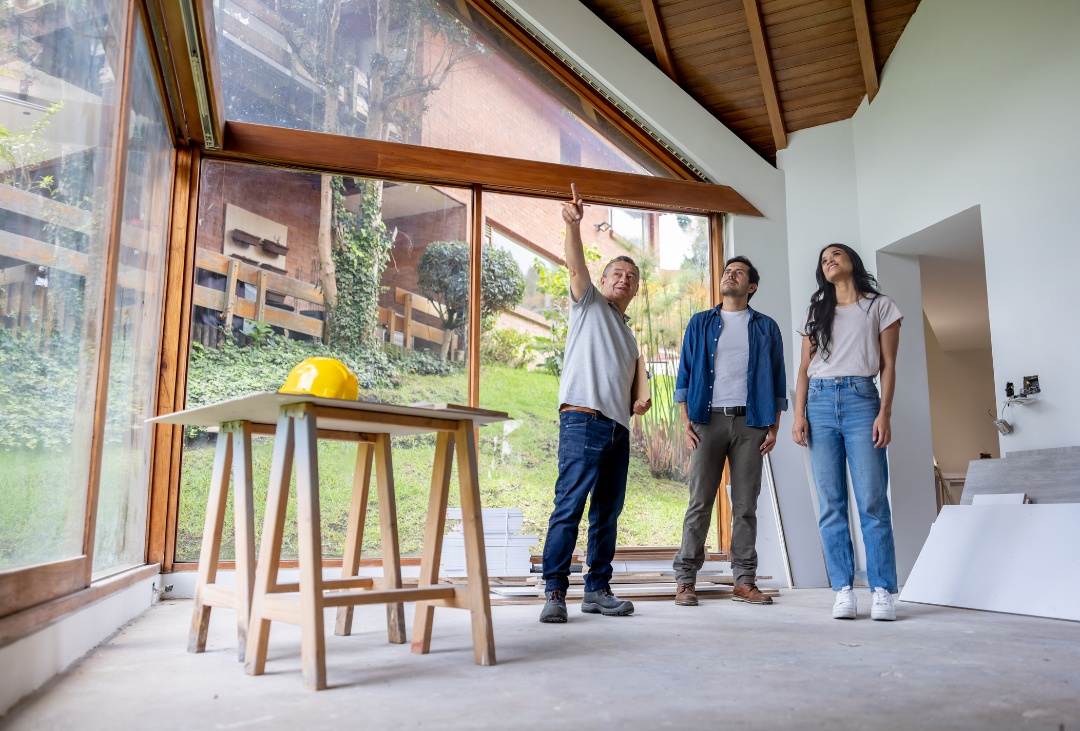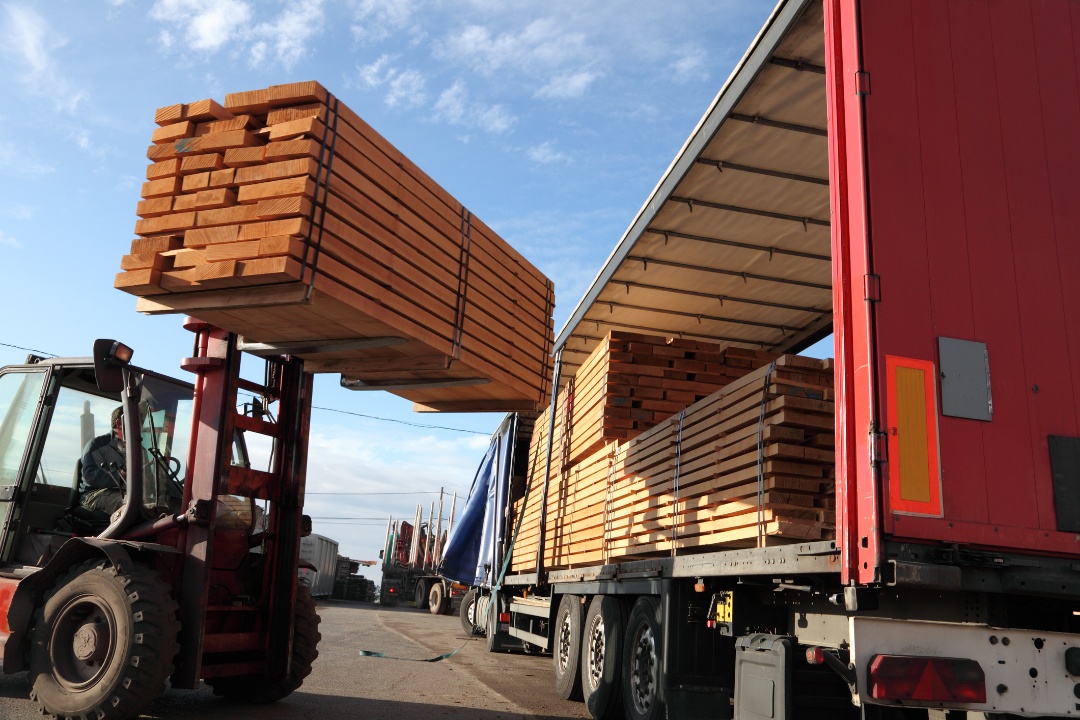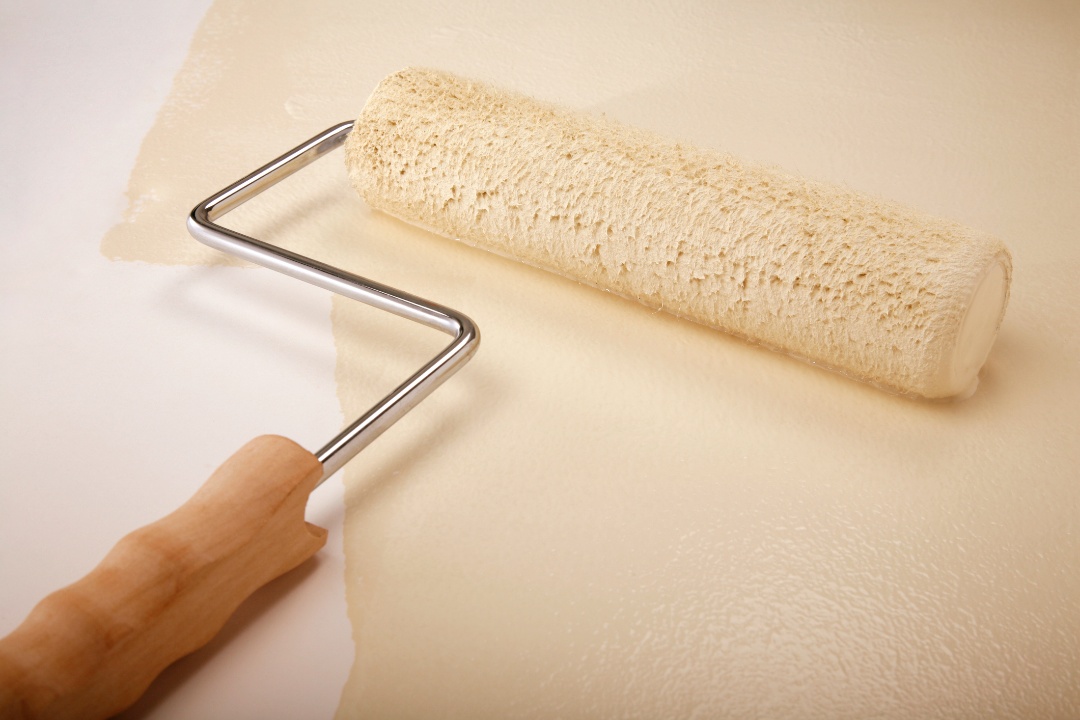The latest on US tariffs and why you may want to get that remodeling project started now

Planning a remodel? Be ready for rising costs and fewer options.
Before you renovate your home—or even update some of your appliances—it’s important to take a closer look at how the recent shifts in U.S. tariffs are directly affecting construction materials.
From higher contractor quotes to longer delivery windows, tariffs are driving up costs in ways that homeowners can’t ignore. Understanding the current tariff landscape can help you plan accordingly and make smarter, more cost-effective decisions.
Table of Contents:
WHAT’S HAPPENING WITH U.S. TARIFFS?

Construction materials are one of the most affected categories from the tariffs
Tariffs are taxes placed on imported goods to protect local industries and to raise revenue. That extra cost often gets passed down to consumers, however, in the form of higher prices, longer wait times, or fewer available options.
In the latest round of tariffs imposed by the U.S. government, imports from countries like Canada, Mexico, and China will be the most affected by the new trade policies. These countries supply finished goods and appliances, as well as a large share of the construction materials used in building and home renovation:
- Lumber: Although the additional proposed 25% tariff on Canadian softwood lumber was ultimately exempted, the current rate for this construction material is 14.54% — double the rate from 2024. Since Canada supplies most of the country’s softwood lumber, this has a big impact on framing and woodwork.
- Drywall: Mexican gypsum, which is essential for drywall production, is also affected since Mexico provides over 70% of U.S. imports.
- Steel and aluminum: These construction materials now face 25% to 50% tariffs, depending on where they’re from. Steel and aluminum are essential for roofs, framing, and appliances and the tariffs have led to increased costs in the construction and manufacturing sectors.
- Appliances and fixtures: Items like refrigerators, washers, and plumbing fixtures from China and Mexico now come with 10% to 30% tariffs.
- Other Materials: Prices for copper, structural steel, and roofing materials are up 15% to 40%, driven by both tariffs and ongoing supply chain issues.
WHERE REMODELING COSTS ARE POISED TO SURGE
With these new tariffs, the cost of home remodeling is rising quickly and homeowners are likely to feel it in more ways than one. These are the areas of a project that are seeing the biggest increases and delays:
-
Imported materials
Imported materials are seeing some of the biggest price increases due to new tariffs. Items like natural stone, marble, custom wood cabinets, lighting, plumbing fixtures, and hardware from other countries now cost more because of added import taxes. In some cases, especially for stone and tile from China and Mexico, costs have gone up by 20% or more. This makes custom kitchens and bathrooms much more expensive to build.
Cabinetry and built-in storage are also affected, especially when made with Canadian wood. With tariffs nearing 40%, wood-based construction materials like trim, window frames, and vanities are costing more to produce and buy. Even gypsum, which is essential for drywall, is now more expensive due to Mexican import taxes.
-
Appliances
The price of appliances are also expected to rise. Items like refrigerators, dishwashers, stoves, washers, dryers, and HVAC systems made in China or Mexico now have import taxes between 10% and 30%. These extra costs often show up as higher prices or reduced discounts in stores.
High-end brands like Bosch, Samsung, and LG, which depend on overseas parts and production, may be hit the hardest. They could raise prices or run low on stock as they adjust.
-
Labor
While tariffs don’t directly impact labor, they create ripple effects. When construction materials become more expensive or harder to get, projects take longer to complete. Delays from backordered items or limited product choices mean workers stay on site longer, increasing labor costs. Contractors may also raise their prices to cover the uncertainty around material costs.
At the same time, labor itself is becoming harder to book. As fewer homeowners move forward with renovations due to rising costs, skilled workers may choose bigger, higher-paying projects instead. That means mid-sized jobs—too big to do yourself but not large enough to attract top contractors—could become even more expensive and harder to schedule.
PROJECTS THAT ARE MOST AND LEAST SENSITIVE TO TARIFF INCREASES

Painting a home’s interiors is one of the projects least affected by tariffs
When it comes to home renovations, timing is everything. But with the latest changes, prices for key building materials are climbing fast, making some renovation projects more expensive than others. Here’s a breakdown of which projects are feeling the heat and which ones offer more budget stability despite today’s tariff climate.
Renovations that will feel the tariff pinch first
Some home upgrades depend heavily on imported materials or appliances. When those items get hit with import taxes, prices rise and so do the bids from your contractor. If you’re planning any of these projects, it’s best to keep a close eye on your budget—and maybe start sooner rather than later.
-
Kitchen remodels
Kitchens top the list of high-impact projects because they rely on everything that tariffs are currently hitting hardest: imported appliances, stone countertops, custom cabinetry, plumbing fixtures, lighting—you name it. All of this adds up fast, especially in custom or high-end kitchen designs.
-
Bathroom renovations
Bathrooms may be smaller than kitchens but they pack in just as many imported goods. Vanities, stone surfaces, tile, sinks, and fixtures are frequently sourced from abroad. When you include drywall, which is made using Mexican gypsum and also subject to tariffs, you’ve got a recipe for rising costs. If you’re hoping to refresh a bathroom this year, consider locking in your materials early or asking your contractor American-made alternatives.
-
New rooms or extensions
If you plan on adding a new room or extending a certain area of your home, the materials used for this project (framing, roofing, drywall, and insulation) are seeing the biggest cost increases right now. Home additions rely heavily on lumber (much of it from Canada), along with steel, aluminum, and other tariffed goods.
Not only are the materials more expensive for home addition projects, but the availability is also inconsistent. For projects like this, expect your quote to be higher than it would have been last year.
-
Deck and outdoor living spaces
If your dream is a backyard makeover or new deck this summer, get ready to pay more for lumber, especially if you’re getting it from Canada. Pressure-treated wood, imported railings, and hardware are also seeing increases.
While some homeowners are turning to composite materials, those too may be affected depending on their country of origin. Outdoor upgrades are still worth it, especially if you plan to enjoy the space long-term, but budgeting a little extra is wise.
-
Full remodels
Whole-home renovations are particularly sensitive to tariffs because they involve just about everything: cabinetry, drywall, flooring, steel beams, electrical wiring, HVAC, and appliances. With so many moving parts and imported goods involved, the ripple effect of tariffs can hit hard.
If you’re planning a top-to-bottom renovation, talk to your contractor about sourcing strategies and time-sensitive ordering. Locking in materials early could save you thousands (and a few headaches).
Upgrades with minimal tariff impact
Not every project is feeling the weight of tariffs. Some upgrades rely more on labor than materials, or use products that are domestically sourced and less affected by trade shifts. If you’re hoping to make improvements while keeping costs manageable, these are great places to start:
-
Interior painting and drywall patching
Paint and patch jobs are still relatively safe territory. Most interior paints are made domestically and minor drywall work doesn’t require a lot of material, so the impact of gypsum tariffs is minimal. If your walls need freshening up, this is one of the most cost-stable projects you can take on.
-
Floor refinishing
Refinishing existing hardwood floors is a smart alternative to installing new ones. You avoid having to purchase new wood (which may be tariffed), while still giving your space a dramatic refresh. Sanding, staining, and sealing costs haven’t changed much and you’ll likely see a great return on investment.
-
Lighting upgrades with domestic fixtures
Lighting can dramatically change the feel of a space and not all fixtures are subject to tariffs. Many U.S. manufacturers continue to offer stylish, energy-efficient options that remain budget-friendly. By steering clear of imported luxury brands, you can still upgrade your ambiance without paying a premium.
-
Landscaping and outdoor clean-up
If you’re looking to boost curb appeal, landscaping remains one of the least tariff-impacted projects. Plants, mulch, gravel, and outdoor décor are typically sourced locally or regionally. Since the majority of landscaping cost is labor-based, you’re less exposed to the volatility affecting imported building materials.
-
Smart home tech installation
Smart thermostats, doorbells, security cameras, and lighting systems are generally not as heavily impacted by tariffs, especially those produced by U.S.-based companies that have already adapted their supply chains. Plus, labor is the biggest cost for these smart home tech installations and that hasn’t surged (yet). If you’re looking to modernize your home without a major remodel, this project is a low-impact way to begin.
HOW TO MOVE FORWARD WISELY
A home remodel is still doable and still worth it as long as you take the time to plan wisely. With a few smart moves, you can sidestep some of the pricing headaches and get the results you want without going overboard.
-
Work with experienced contractors and designers who understand the tariff timeline
For a home remodel during this period of rising costs, it’s best not to go with the cheapest contractor or designer. Instead, choose professionals who understand how tariffs are affecting prices and timelines in today’s market.
An experienced contractor can:
- Point out which materials are most likely to get more expensive
- Suggest good, in-stock alternatives
- Help you find better pricing through trusted suppliers
- Plan ahead for possible delays or cost changes
When vetting potential contractors and designers, don’t hesitate to ask how they handle tariff-related price changes, material delays, or availability issues. A good team will give you clear answers that will help you plan your remodeling project with confidence and avoid any unexpected surprises down the road.
-
Pre-purchase key materials and appliances
If you’re moving ahead with a renovation, don’t wait to order your materials and appliances, especially those affected by tariffs. Locking in prices now helps you avoid future price hikes and cuts down the chance of long delays from backorders. This is especially important for major items like kitchen appliances, cabinets, tile, and specialty fixtures, which could become harder to find or more expensive in a few weeks.
-
Get permits and approvals in place early
Having all the necessary permits and HOA approvals before the project begins is a step that is often overlooked. It might not be the most exciting part of your renovation, but it’s one of the most important for keeping things on schedule.
With materials taking longer to arrive, you don’t want your paperwork to be the thing holding things up once everything is ready to go. Plus, many local building departments are seeing delays in processing times due to increased demand. The sooner you have permits in hand, the more flexibility your contractor has to start work when materials arrive.
-
Focus on the projects that will have the most impact
When renovation costs go up, it’s important to be strategic about where you invest your time and money. Now might not be the best time to update your whole house all at once. Instead, focus on the areas that give you the biggest value and start there.
If you’re taking on a large project such as a full renovation or home addition, break it into smaller phases. Doing the work in steps gives you more control over your spending and helps you adjust if prices change.
And don’t worry about holding off on luxury features or cosmetic upgrades. Fancy finishes or built-in extras can always be added later when the market stabilizes. Focus on what matters most now and you’ll still make meaningful progress.
-
Stay flexible and have a back-up plan
No matter how carefully you plan your renovation, unexpected challenges can still pop up. That’s why it’s so important to build flexibility into both your budget and your expectations. One of the most helpful things you can do is set aside a 10–15% contingency fund in your budget. This cushion gives you a buffer for rising costs, emergency substitutions, or extended timelines—without blowing your entire financial plan.
It’s also a good idea to have second-choice materials or backup selections ready to go. Should anything be unavailable, you’ll already have an approved alternative that can keep things moving forward. And lastly, don’t lose sight of your priorities. Focus on functionality, durability, and overall design impact first.
START YOUR BEVERLY HILLS LUXURY HOME REMODEL WITH CONFIDENCE
The market may be shifting, but you still have the chance to bring your ideal Beverly Hills luxury real estate property to life.
If you’re thinking about remodeling or buying a property that needs work, now is a great time to take action. As a top Los Angeles Realtor with experience in luxury real estate and renovations, I’m here to help you navigate these changes.
I’d be happy to assist should you have questions about timing, costs, or next steps. Reach out to me, Joyce Rey, at 310.291.6646 or send me a message via email.

Browse our latest news and updates below

